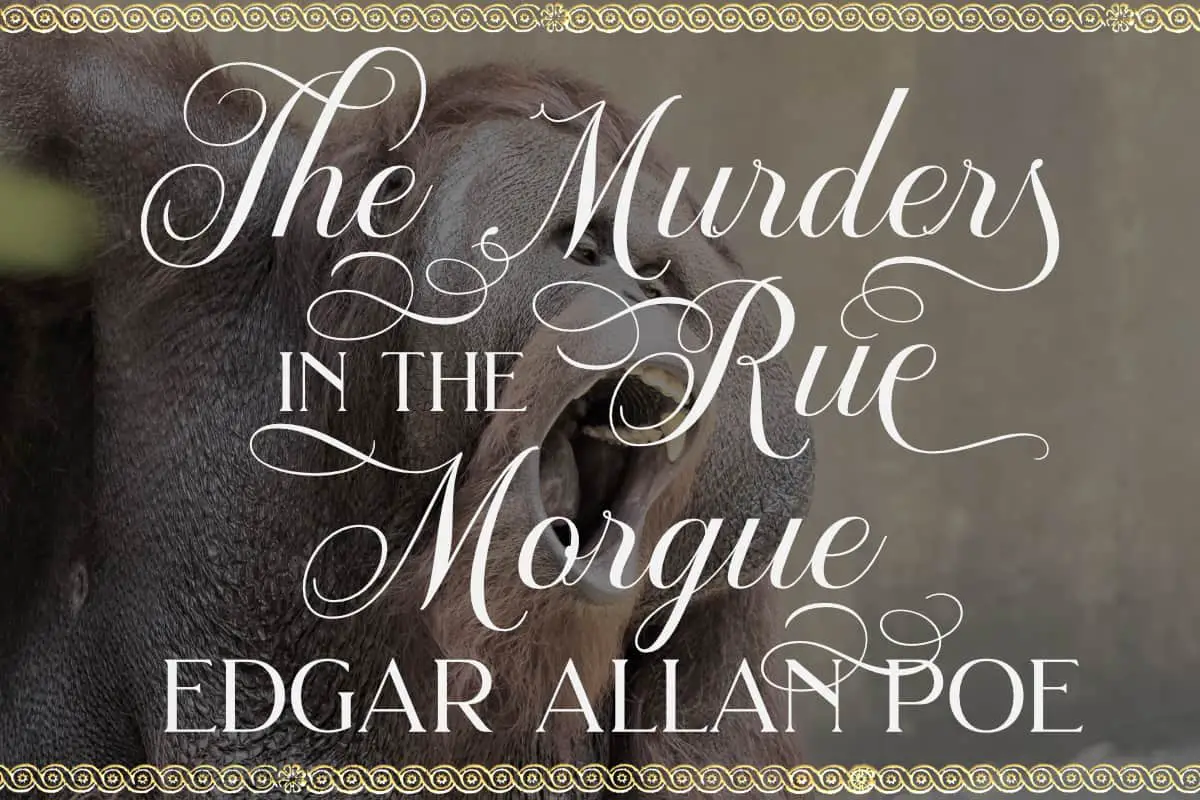“The Murders In The Rue Morgue” by Edgar Allan Poe (1841) is thought to be the first modern detective story. (Well, Oedipus is sometimes considered the first one on record.)
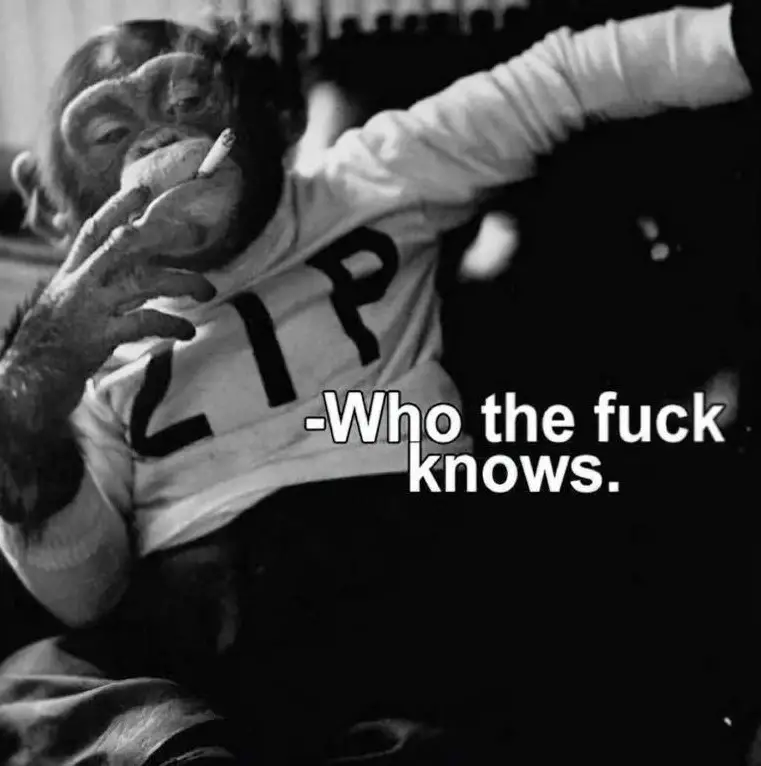
For me there is little interesting about this story, except for its influence on the crime genre. That in itself makes it worth reading. As I read, I tried to put myself in the mid of a mid-nineteenth century reader. Unlike us, these readers were not bombarded daily by one nasty crime after another. We’re now at a point where it’s necessary for your mental health and happiness to limit exposure to your newsfeed, but “The Murders In The Rue Morgue” was written long before the notion of ‘serial killer’ existed. I imagine this story was gripping at the time.
“The Murders In The Rue Morgue” is basically a story of behaviour profiling, but written as fiction before actual behaviour profiling existed:
It wasn’t until more than a century after Poe’s “Rue Morgue” and a half century after Sherlock Holmes that behavioural profiling moved off the pages of literature and into real life.
Mindhunter: Inside the FBI’s Elite Serial Crime Unit
Mindhunter is a standout example. Set in the late 1970s, two FBI agents are tasked with interviewing serial killers to solve open cases. They use psychology.
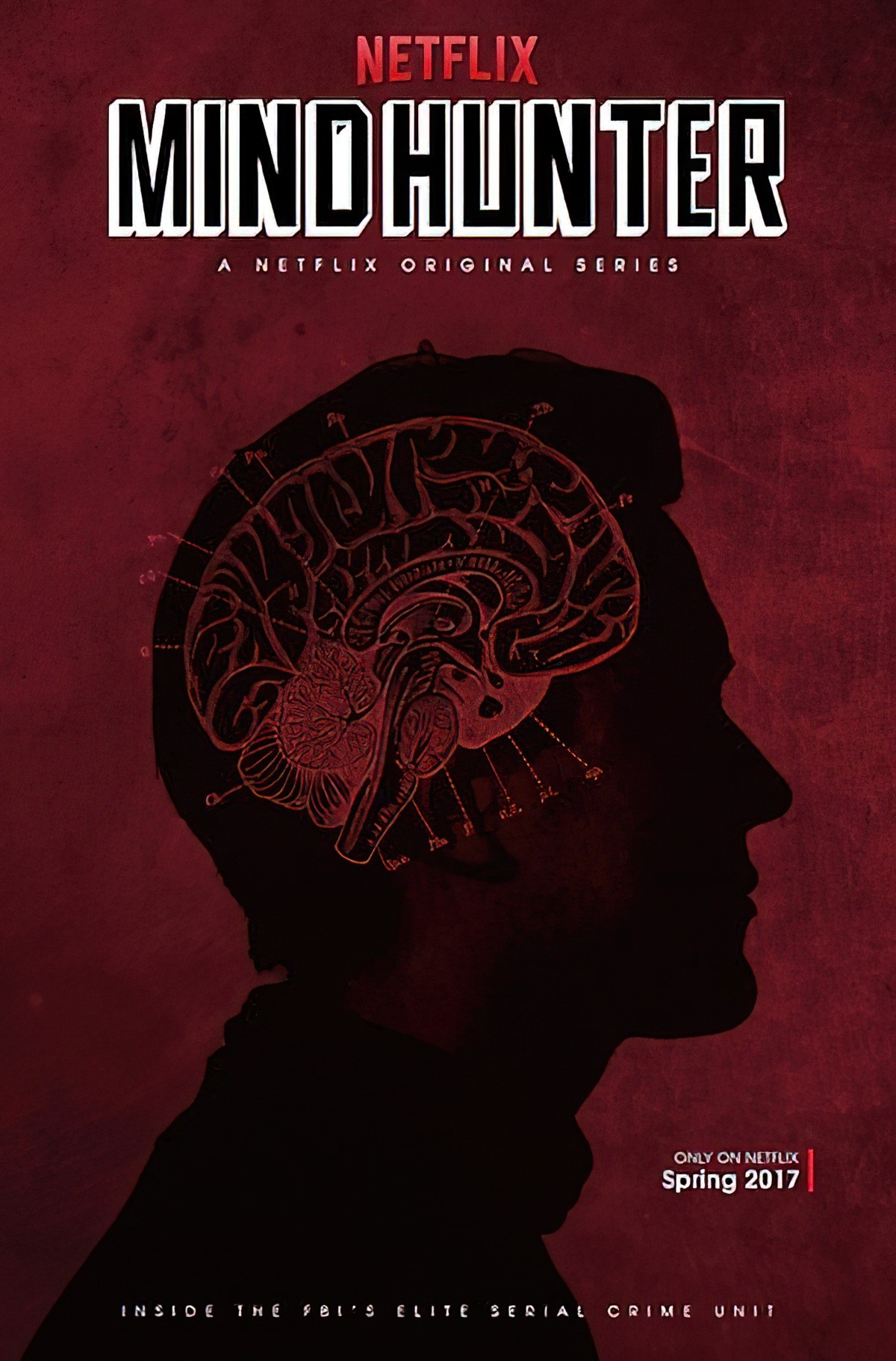
Now, there also exists an entire subgenre of detective stories in which the detectives are stage magicians for their audience. The Mentalist is a standout example. A famous “psychic” outs himself as a fake and starts working as a consultant for the California Bureau of Investigation so he can find “Red John”, the madman who killed his wife and daughter. He uses the analytical skills he utilised as a fake psychic when dealing with suspects.
Back to Poe. What is it exactly he did for modern detective stories again?
Poe’s Influence On Plotting
That the short story’s shortness creates the illusion that understanding of the whole precedes understanding of the parts was first proposed by Edgar Allan Poe. Indeed, Poe’s most significant contribution to the development of the short story as a new genre in American literature was his creation of an alternative definition of “plot”. Instead of “simple complexity” or “involution of incident”, Poe adapted from [German Poet] A.W. Schlegel a new meaning of the term — “that from which no part can be displaced without ruin to the whole.” By this one stroke, Poe shifted the reader’s narrative focus from mimetic events to aesthetic pattern. Poe argued that without the “key” of the overall design or plan of a work of fiction, many points would seem insignificant or unimportant through the impossibility of the reader’s comprehending them. Once the reader has the overall design in mind, however, all those points that might otherwise have been “insipid” or “null” will “break out in all directions like stars, and throw quadruple brilliance over the narrative.”
Charles E. May
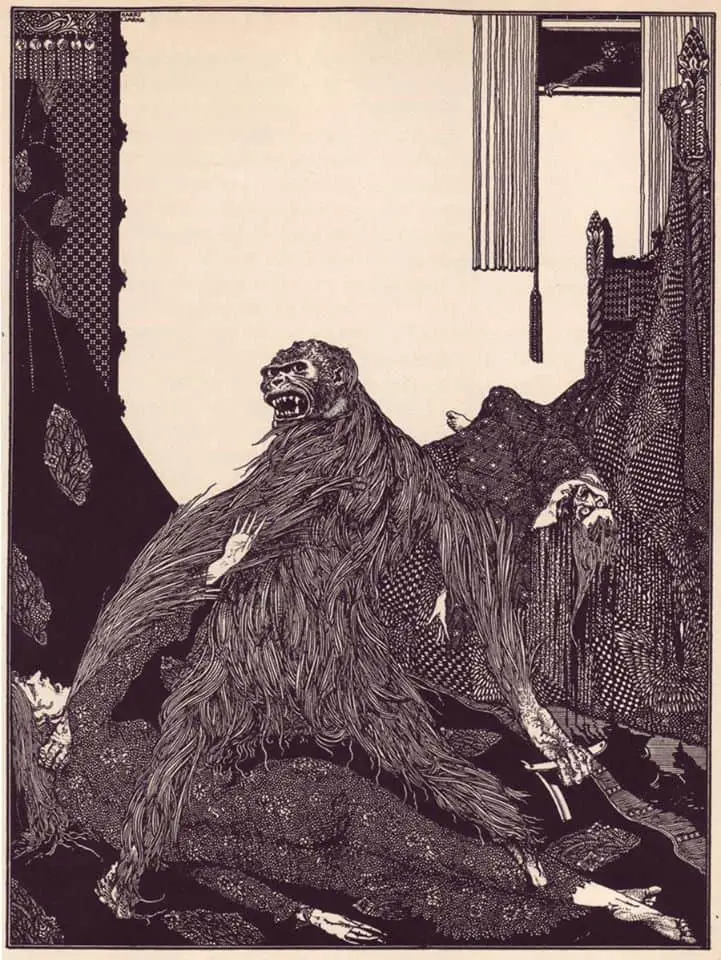
Features of Poe’s Work
- Characters have no family ties — no parents, no children.
- Narrators are always male — spiritually and emotionally cut off from the rest of the world.
- Cold in tone, though passionate and sensual.
- The maiden is an archetype and always described in general terms — always beautiful and always on the cusp of womanhood. (There’s only a dead maiden in this one. She swoons when she sees the orangutan SPOILER ALERT.)
- Poe was a freaking ephebophiliac who married a 13 year old cousin. Then she died from tuberculosis. (No, that was still f**ked up, even back then.)
- For Poe, women = death itself.
- Poe’s stories are united in their expression of fear of death.
SETTING OF “THE MURDERS IN THE RUE MORGUE”
Residing in Paris during the spring and part of the summer of 18—
Poe doesn’t tell us which year this happens. I guess this is Poe’s way of making it seem like the narrator wants to keep the details to himself lest the characters are identified and vilified.
As for Rue Morgue, we do know it’s unlikely Poe ever visited Paris. But he would have used maps or general knowledge to position this weirdly specific story in place, if not in time.
Poe depicts for us the classic haunted house:
a time-eaten and grotesque mansion, long deserted through superstitions into which we did not inquire, and tottering to its fall in a retired and desolate portion of the Faubourg St. Germain.
Eddie Murphy White people and Hauntings, and why white people don’t just get the f**k out. He has a point.
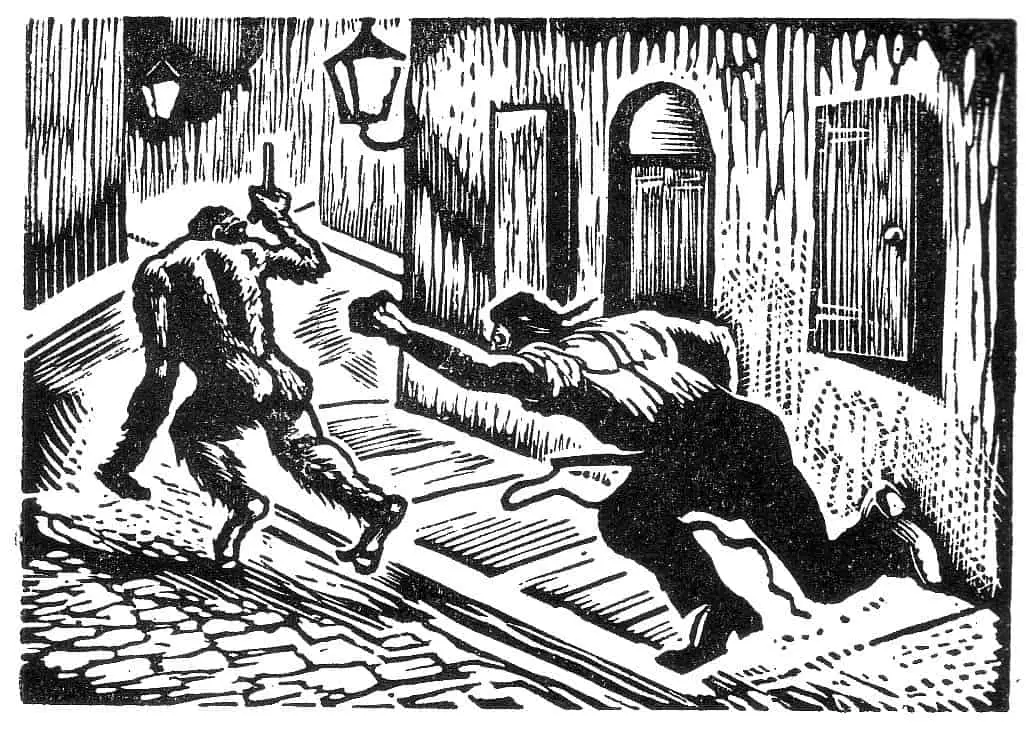
STORY STRUCTURE OF “THE MURDERS IN THE RUE MORGUE”
This short story opens in a non-inspiring way, and if I weren’t determined to read famous and classic short stories, I definitely would not persevere after:
THE mental features discoursed of as the analytical, are, in themselves, but little susceptible of analysis. We appreciate them only in their effects. We know of them, among other things, that they are always to their possessor, when inordinately possessed, a source of the liveliest enjoyment.
What? It goes on like that for a very long introductory paragraph in which the narrator insists he is not ‘writing a treatise’, when he very much is. He goes on a bit about chess and how draughts isn’t always inferior, which I suppose is meant to persuade us that he’s not an intellectual snob despite seeming exactly that.
Eventually our insufferable narrator stops dickwaving and writes:
The narrative which follows will appear to the reader somewhat in the light of a commentary upon the propositions just advanced.
Finally, a plot is about to begin?
SHORTCOMING
Is this intentional or is it my modern interpretation: The narrator is boring and pseudo-intellectual. Hopefully Poe meant me to think this, and this shortcoming will be his downfall. However, the narrator is simply the viewpoint character.
The main character of the embedded story is Monsieur C. Auguste Dupin. The narrator paints him as an underdog who is poor but I call bullshit on his poverty since he still has money to buy books in a time when books were expensive.
DESIRE
The narrator and Monsieur C. Auguste Dupin set up house together in what is clearly a romantic if not sexual relationship. He insists he’s not ‘penning any romance’ but this could be an example of paralepsis (saying something by insisting you’re not saying it). Let’s just call it a bromance.
They’re walking along in silence one night down a ‘long dirty street’ when Dupin reveals that he can read the narrator’s mind, chiming in as if the inner workings of the narrator’s mind are part of a spoken conversation. Naturally, the narrator wants to know what’s up with that. Dupin tells him it’s a bit of a party trick using logic and keen observation of body language. If he knew what someone was thinking 15 minutes ago, he can trace their line of thought in a fatalistic manner.
OPPONENT
As in any detective story, the opponent is the individual who committed the crime. In classic detective stories, we don’t see them until the end — their identity is the big reveal.
PLAN
Our two detectives visit the scene of the murders and our narrator mostly looks on while Dupin examines every single thing and uses analytical skills to determine facts about what happened.
BIG STRUGGLE
The Battle is given to us in the story within the story within the story — after the sailor turns up. The chase scene begins with the big struggle.
The chase is a very important part of the modern detective story, even if it doesn’t include an actual chase scene.
Then the murder itself is described, all conjecture but presented as analytical fact.
REVELATION
In what can only be considered a twist ending, since the suspect wasn’t mentioned, and there was zero foreshadowing, the murderer is revealed to be an orangutan.
NEW SITUATION
The narrator has nothing to add, because anything further would be conjecture. He ends with a French phrase:
de nier ce qui est, et d’expliquer ce qui n’est pas
Which apparently means ‘to deny what is, and to explain what is not’. It’s a quotation from Jean-Jacque Rousseau, a French philosopher who lived in the 18th century.
Poe and Women
Some feminists have been troubled for years by the way in which Poe depicts womankind. Surely there must be something deeply misogynistic about a writer who repeatedly portrays women as passive creatures, as objects of beauty, of desire, but primarily as victims, sometimes of the most gruesome crimes. Certainly, his stories are packed with images of the darkest aspects of womanhood. Velvet-clad and languorous in The Masque of the Red Death; a maiden murdered in the Rue Morgue; a two-faced witch in The Spectacles.
Elsewhere he depicts women as beguiling, dangerous, deceitful, ghouls, harpies, vengeful crones and treacherous, even in death. And Poe’s fiction is filled with the violent deaths of women, particularly those who are young and attractive, their corpses displayed on marble slabs, rejoicing in their spilt blood, weeping crocodile tears over their ruined innocence and relegating their broken limbs to the poetic corruption of the grave.
The Telegraph
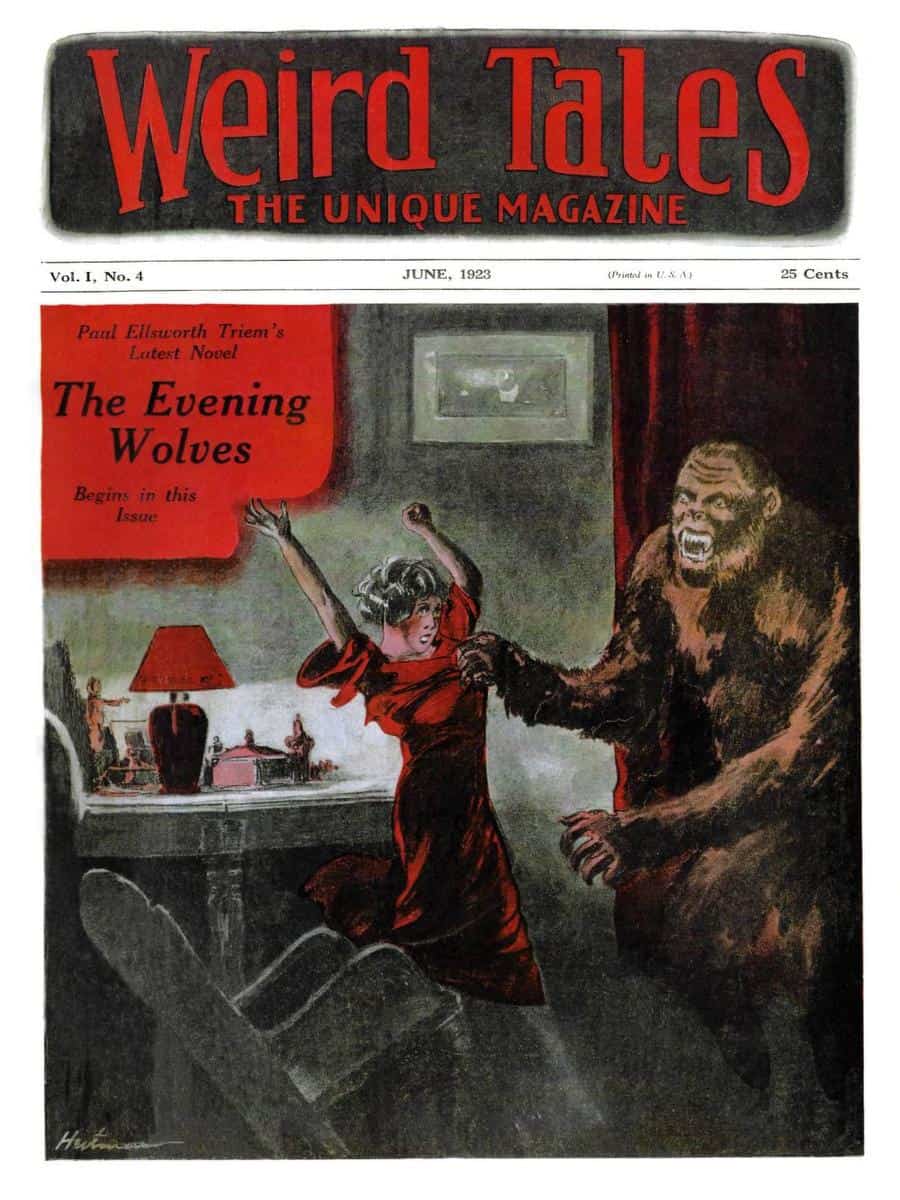
RELATED
In this episode of Talk Nerdy, Cara is joined by James Askew, a PhD candidate in evolutionary biology at the University of Southern California’s Jane Goodall Research Center. They discuss his contributory work toward the recognition of a newly described species of Sumatran orangutan, the Tapanuli. They also talk about conservation of this critically endangered species, whose population numbers an estimated 800 individuals, making it the rarest great ape on the planet.
Are you brave enough to see Edgar Allen Poe without a mustache?
A story about someone’s Lit Professor which relates to this Poe and this short story
